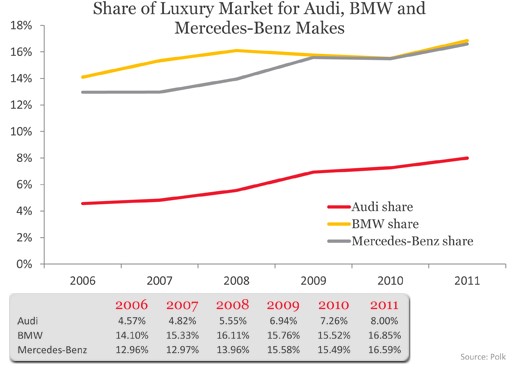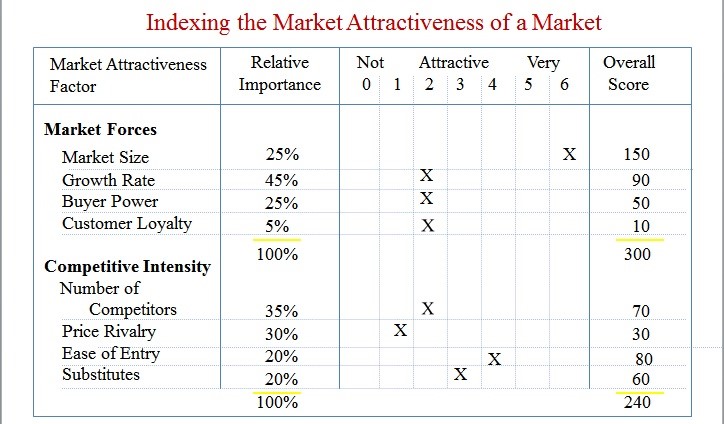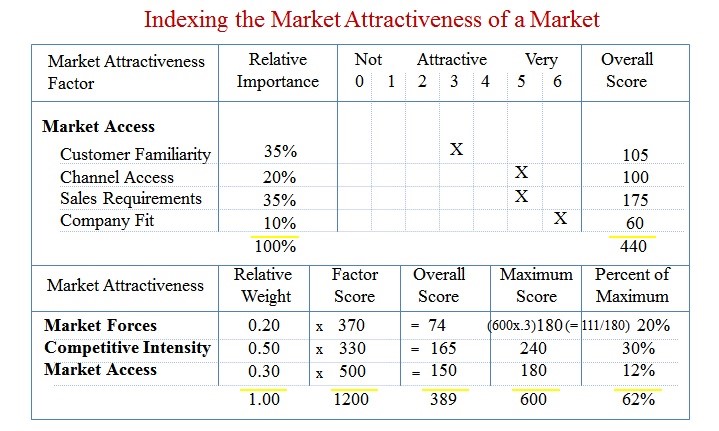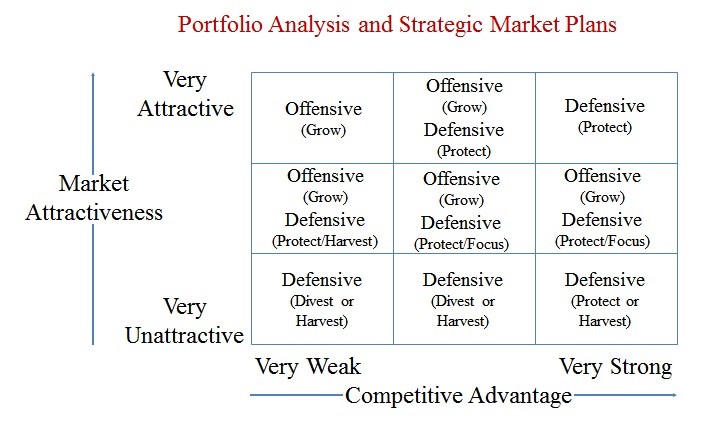Strategic and Non Strategic Decisions
Strategic Decisions
For companies looking to expand, the Ansoff business matrix has four alternatives that involve market expansion, market growth, diversification and product development (Kipley et. al., 2012). The creation of products is a technique that is marked by the launch of new products into developed markets. Samsung seems to have thoroughly accepted this policy.
Samsung is renowned for supplying computer goods and cell phones to a wide degree. Although the firm has diversified into other markets, it is still working hard in its core industry to retain market leadership. According to market share, it placed first in the television industry. In comparison, thanks to its expenditure in smart phones, the organisation enjoyed comparable scores in the smartphone market. Given all this, competitiveness in the telecommunications industry has put Samsung under extreme financial stress. It could be the industry leader, but it has lost some market share after cable providers joined the touchtone cellular, Telev, and PC
Industries (See Appendix 2 for the Situational Analysis).
Any of the company’s latest technologies are more adaptable than prior products. For eg, the Samsung edition of the Android smartphone is more consistent with the market’s current software. Since their goods lack the same capabilities, industry leaders like Apple are nervous about this capability. In addition, to fix the vulnerabilities that were present in older goods, the business now utilizes second mover advantage. To make its devices stand out, it has focused on features such as stability (Reed, 2013).

Across emerging and current product categories, the company has a reputation for creativity. It hired many scholars and innovators in the year 2012. This resulted into more than 5,000 patents being licensed that year. As a consequence of these considerations, the corporation came in second place among the largest proprietary firms in the United States. For its outstanding results, Samsung has won a number of awards. It won four awards in Europe from EISA, which is a recognition scheme for players in the audio and video industry (Samsung, 2013).
Theoretically, corporations can often follow a green strategy alternative that relies, among other factors, on infrastructure, carbon consumption, and customer recycling habits (Kipley et. al., 2012). Samsung was called the 9th best global brand in the market by the Best Global Brands portfolio. The latter achievement emerged through its funding of the Olympics in London 2012. Other corporate funding programs have also been prioritized by the company. The company’s contribution to corporate social responsibility is undeniable. It has a recycling policy in operation at its production plants. This change is aligned with existing environmental preferences for clean development (Refer to appendix 5 on PESTLE analysis). It has also dedicated itself to preserving the atmosphere by eliminating PVCs and other hazardous products (Guardian, 2012). This methods can also offer an organization ecological benefit according to green strategy theories.
Output is also something worth mentioning inside the group. Because of its range of manufacturing centers, Samsung is able to hold its development costs down. Since the organization is headquartered in Asia, it is in a rare place to choose low-cost manufacturing countries. As a consequence of its low manufacturing prices, it has been able to reach comfortable profit margins. The company’s multinational presence leaves it poised to make such a decision. The organization’s good negotiating ability has also helped hold running expenses down. In the semiconductor, cell phone, and television set markets, the company wields tremendous clout over its vendors. This makes it easier to bargain with those labels and thereby create profitable strategies to work with the discrepancies.
Cost leadership can be described as the above step. Michael Porter described several generic tactics that firms should indulge in, and one of them is cost leadership (Porter, 2008). Organizations here lower their cost of output, enjoy better profit margins, and thereby preserve their competitors’ competitive edge. Thus, philosophy approves the business judgment of Samsung.
Non Strategic Decisions
Marketing efforts have also been impressive for the company. The value of the Samsung brand is constantly improving. It is now at $33 billion, which was an increase of 40% from the previous year (Interbrand, 2012). This company has been targeting top technology markets like the US for its products. Branding is not a strategic but an operational decision. Marketing is only one of the ways in which companies implement their grand plan, so it cannot be categorised as a strategic decision.
Employees usually collaborate with human resource personnel in order to give their ideas about certain occurrences. (Refer to appendix 9). This is a non strategic decision because it occurs on a daily basis and is only one of many options to achieve the company talent management strategy. For reference on how the company manages talents strategically, refer to Appendix 1. This was an illustration of the vision that the company has for itself in an attempt to become the best place to work. The image in Appendix 9 also has details about the company’s approaches to achieve a certain vision by 2020. The plan governs operational decisions
Samsung unveiled its prestigious 3D TV brands globally in the major countries like US, UK, Australia and China. The product was launched in all the major stores like John Lewis, Curry’s etc (Refer to appendix 6). This was a non strategic decision owing to the fact that it was operational. Product launches are a manifestation of the company’s strategy for innovation, but are not an actual long term plan.
Risks
In risk analysis, one must look at three key aspects that include risk capacity, risk tolerance and risk required (PWC, 2013). Risk capacity entails all the financial aspects of a client’s business and they include net worth, balance sheet, and revenue inflows. These figures give a brief history of the nature of risks taken by Samsung. In the next segment in this report, details of Samsung’s financial position can be found. The company appears to have strong cash flows (Also refer to appendix 4 on SWOT analysis). This implies that it has the financial backing needed to invest in new ventures.
After looking at risk capacity, one must follow through on risk tolerance. This parameter is a measure of the company’s willingness to take risk. For this aspect, one must look at the frame of mind of the company and establish whether they are capable of handling such risks. Samsung is one of the most aggressive organisations in the smart phone industry. The firm is currently competing with companies that consider it its suppliers. The organisation recently entered into the Android market thus causing ripples across Apple’s and Google’s market share. The firm decided to name its new innovation the security-enhanced android. Such a label has the implication that other organisations offering the same product were not secure. The company had worked with Apple and Google for a relatively long time. However, this latest move has caused the two companies to rethink their strategy.
Google is now using a different supplier – Motorola to create its version of the X-phone. Conversely, Apple has decided to partner with other organisations for its android market. The two new competitors have realised that they cannot keep being a market to an organisation that threatens their very existence. As a consequence, most of the buyers have terminated their relationship with Samsung. Such responses pose serious problems for Samsung in the future. While entry into new technology markets may boost its revenue at the onset, some questions may arise on the sustainability of the practice (Reuters, 2013). The company may lose the partners that it had worked with for a long time. Therefore, for every two steps it makes in such new markets, the firm must encounter a backward step with regard to its older partners. This undermines its profitability in the long run (Iwatani and Sherr, 2011).
These actions indicate that Samsung has a high risk tolerance. Interactive strategies in business refer to those approaches that depend on a competitor’s moves (Heifetz, 2012). Sometimes, this may manifest as a form of cooperation or it may be explained through game theory. This appears to be the path taken by Samsung. The method may generate unwanted reactions from rivals. Despite obvious indications that using game theory is a relatively high risks scenario, Samsung appears to be willing to take the plunge. It may be necessary to moderate these risks in the future.
Lastly, businesses must look at risk required when making strategic decisions. All companies have their own goals, which involve risk to a certain extent. The timeline that they must operate in prior to completion of the strategy is also worth noting. Samsung needs to expand the sale of its 3D television sets. This must occur within the next few years. International brands like Sony, Sharp LG, Philips and Panasonic have more than a quarter of high-end market segment for 3D television sets (Refer to appendix 6). By the year 2014 3D sets will have a market share of 39% and a value of more than $117billion. The company must take risks by considering different market segments.
Overall, Samsung has a huge financial base, which implies that its risk appetite is relatively high. Furthermore, the company has a contingent of loyal employees who are likely to stick by it even in tough times. The brand name is solid and has even garnered a reputation for entering into uncharted territory. Acquisitions have also been a common occurrence. Therefore, the company has a high risk appetite, which is likely to be manifested in new ventures aligned to the business.
Financial Overview
The firm has enjoyed increased income over the last three years. In 2010, it had a net income of KRW 16,147 billion. This reduced to KRW 13,759 billion and then increased to KRW 23, 845 billion. The corresponding operating profit for these same years was KRW 16,147 billion, KRW 13, 759 and KRW 23, 845. Cash flows from operating activities also followed the same pattern. They increased, decreased and then increased again between 2010 and 2012. These figures stood at KRW 23, 827 billion, then 22, 918 billion and finally increased to KRW 37, 973 in 2012. The annual report for 2013 is yet to be released but is poised to be quite positive.
Shareholders’ equity rose steadily within this period of analysis. In 2010, it stood at KRW 89, 349 billion. Subsequently, the figure became $101, 314 billion and finally in 2012, it stood at KRW 121, 480. Investing activities took a toll on the company as the income from these activities was negative throughout the three years under analysis. In fact, expansion activities are the number one reason behind its relatively low profit margins.
Overall, the most recent sales revenue are KRW 201 trillion. This is approximately, double the amount from the previous year. Additionally, the organisation has a stable capital and liability ratio. The latter figure is 49.1% while the capital adequacy ratio is currently at 79.5% (Samsung 2013)
Income Statements 2010 2011 2012 2012
Sales 154,630 165,002 201,104 220101,104
Operating Profit 17,297 15,644 29,049 290499,049
Net Income 16,147 13,759 23,845 23,845
Balance Sheets
Assets 134,289 155,800 181,072 181,072
Liabilities 44,940 54,487, 59, 59159,591
Shareholders’ Equity 89,349 101,314 121, 480 121,480
Cash Flows
Cash Flows from Operating Activities 23,827 22,918 37,973 37,973
Cash Flows from Investing Activities (23,985) (21,113) (31,322) (31,322)
Cash Flows from Financing Activities (152) 3,110 (1,865) (1,865)
(in billions of KRW)
Recommendations
Samsung is in a place to develop and raise its marketplace share by becoming a worldwide resource of telecom services. In the strategic decisions, it was shown that the company has lost a lot of market share to rivals. It can reclaim these aspects by adopting a more proactive approach.
Under the strategic decisions, it was shown that the company has a tendency to become a cost leader. It needs to expand this strategy in all its core business. The strategic decision of diversification must be rethought in order to dwell on televisions sets.
Samsung is a global brand, so it can easily step in both the high and low end market segments owing to its overall resources and experience in the market. Samsung must be a part of a big upgrade of the novel 3D Telev system that will take place across the globe.
Samsung may have to rethink its aggressive strategy of competing with most of its consumers. The latter companies always have the option of selecting other suppliers as they have a high bargaining power. In order to cub patent infringement, it can consider partnering or merging with its competitors. If this is not tenable, then it may need to do more legal research concerning its new products.
Conclusion
Samsung seems to be making waves within the electronic industry. However, its sustainability in the industry can be put into question if it does not reverse its current strategic choices. The company prefers to use game theory in order to make its strategic moves. This has brought some legal and corporate challenges. Instead, the company should dwell on entering the high segment market for the sale of 3D televisions. It should use cost leadership to achieve this goal by selling high-quality televisions to the new target market. A risk analysis has shown that the company has a high risk appetite. Samsung has a supportive employee base as well as a sound financial position. Therefore, the company should take risks that enable achievement of its strategic goals.
Appendix
-
Strategy at Samsung from the Annual Report

2. Situational Analysis
The rivalry in the telecom business has put Samsung in intense financial stress and the business faced a great loss in marketplace share when cable firms presented complete resolutions to its clientele that enclosed touchtone phone, PC and TV services. Samsung is in a place to develop and raise its marketplace share by moving its objective of becoming a highly money-making worldwide resource of telecom services into realism.
-
Gap Analysis
An association should think about all possible reasons to solve matters and make the best choices. By enhancing decision process, knowledge administration, worker requirements and synchronization, work place infrastructure has a considerable effect on managerial presentation. First companies depend upon the capability of people to organize their individual work endeavor toward a universal objective. Samsung is experienced with financial pressures. They team up to organize plans to streamline the corporation. Through the plans they are trying to put into practice, Samsung is having complexity communicating the details to their workers. Samsung is known for treating their workers well, so they do not want to damage that standing for the reason that their employees are very important part of the business.
-
SWOT Analysis
Strengths
- Customers of the Samsung are reliable and supporting the brand.
- Samsung is currently enjoying difficult position against its rivals.
- Samsung is keeping very good business relationship with their vendors and suppliers.
- Samsung electric company is financially sound and stable.
Weaknesses
- Samsung is facing furious competition by its rivals.
- Trade unions in South Korean are tactically links and they are very strong while negotiating and bargaining.
- Marketing executives required improvements in all the essentials of marketing strategies.
Opportunities
- The economic situation in Seoul (Korea) apparently looks positive.
- The government is giving consistent policy to Samsung.
- Samsung is rationally equipped to be careful of the changes in technology.
Threats
- The law has been passed very often in relation to the industry sector.
- Technological changes are taking place frequently in the industry.
5. PESTLE Analysis
Political Features: These features have a great power on the ruling of firms that consists of laws enforced by the governmental body in which firms should function. As indicated by the study, the political setting in UK seems quite stable and steady. Regulations planned by the novel conformist regime like taxes, cutting the communal expenses and judgment to increase gasoline price will have strong effect on the purchasing power of customers. In addition, the business policies of Korea also plays crucial role for supporting worldwide competitiveness to relocate expertise in exchange for marketplace admittance.
Economic Features: The financial Features plays very critical and significant position in marketing the 3D TV. Financial depression or decline of financial system decreased the spending power of people. U.K market is in danger of extinction by the economic slump. As the redundancy rate rises, customer’s excitement for novel technology may be tangential. Sale volumes have been incessantly decreasing in value and the exchange rate is all time low that will boost the import cost.
Social Features: Current age band of people has strong zeal and mania for innovative tools and expertise. Electronics market plays very important function in satisfying this passion. A young person watching late nighttime programs and getting enthusiastic to television programs that decreases their attention towards games and studies is an imperative societal feature.
Technical Features: The electronics market has been well thought-out as one of the largely rising with low product life stages that have demonstrate the approach to worldwide earnings. A 3D television set is a special viewing television device that utilizes 3D techniques of manifestation that projects a television program into a rational 3 dimensional domain. Technical expertise is brand new to television market that further decreases people going to Cinemas. Samsung is leading the market with another landmarkoforiginal and ground-breaking expertise
Ecological Features: Customers are having more consciousness towards ecological and expecting increased power effectiveness, inconsequential or no release of hazardous energy.
Lawful Features: Intellectual possessions are turning out to be a critical and imperative in the market. There are huge odds of disagreements can take place like the recent famous Apple’s disagreement with Google’s Nexus One regarding a copyright matter. Samsung itself won a heated discussion recently in opposition to Sharp on the subject of a copyright matter that was started in the year 2007. Legislation concerning neighboring worker civil liberties, taxes and Intellectual possessions will out influence on Samsung’s tactical choices.
6. Marketing Mix
In modern marketing, marketing combination is an important term and it is rationally referred to as a convenient method that the enterprise combines to elicit the response it wants in the intended market, because it focuses on all the items a corporation may do to convince the demand for its produced products (Kotler and Armstrong, 2004). Marketing is about offering the best commodity to the right consumers at the right price in the right manner. It’s how that gives meaning. Getting a product to market necessitates a cautious mixture of several primary ingredients, recognized as the Marketing Mix’s 4Ps: Product, Price, Promotion, and Place.
Product: The next-generation 3D television is a novel device. In basic words, to deliver real entertainment to its consumers, the product comprises of all features of creativity. The 3D TVs is expressed as the best breakthrough in the history of television with the blend of highest efficiency and trendy style. The user would have the prospect of viewing 3D TV shows seated at home with the Samsung 3D Screen, and watching TV will never be the same when the viewer would be able to admire and witness the sensation of their favourite sports, film and TV stars jumping from their TV into the living room right before them. Samsung sells a variety of 3D-capable LEDs, LCDs and Plasma TVs (www.samsung.com, 2010)
Price: Pricing is principally fixing a particular price for a services or product presented. In simple words, Kotler and Armstrong (2004) make clear the awareness of price to get the manufactured goods. Fixing a right price is not as simple as it looks. Usually in common regulation, populace asserts that a small cost will draw additional clientele. The argument is not accurate because clientele not only look for cost alone. Clients look forward to an appropriate service and value for the funds that he pays. They take action in reaction to value so a lesser cost does not fundamentally indicate stretched volume of sales if the services or item for consumption is not fulfilling the hopes of the customers. The expense starts from £ 1600 to £ 2000 for the 3D brands. The price is not that fair.
Placement: In big countries such as the United States, the United Kingdom, Australia, and China, Samsung launched the prestigious 3D Telev brands. The item is released in all major retailers, such as John Lewis, Curry’s, etc (Jobber and Fahy, 2003).
Promotion: The promotion captures the type of a new “Starter Kit” that presents United States costumers the opportunity to get pleasure from 3D movies in their own homes, rather than going to the cinema house to enjoy 3D movies. Samsung used the FIFA World Cup to advertise many value-added packs as well as the latest 3D Telev versions (Bradley, 2005). Bundled 3D film, home theater setups, and Blu-ray players were sold to potential customers. The Bonus 3D package will be accessible to people who buy those Samsung 3D TV models from retailers around the world. Samsung also introduced a strong marketing campaign for its collection of 3D TVs in addition to these bundled promotional deals. The promotional plan for television is worth £ 8 million over 3 months. It has now released £7 million print media ads in comparison to the TV advertising.
7. Market Segmentation
- Middle age groups
- Teenagers
- Executive class
- Behavioral segmentation
- Technological segmentation
- Designing the new products on the latest trends
- Affordable prices for all income groups of the society
8. Target Market
Samsung would approach both the high-end marketplace segment and the low-end marketplace segment since there are opportunities in both regions. Major labels such as Sony, Panasonic, LG, Philips and Sharp hold more than 75% of the high-end consumer segment worldwide. As a global product, Samsung can effectively reach into both the high-end and low-end marketing markets owing to its general awareness and willingness to invest in the market (Chang, 2008). According to industry analysis company Generator Research, a significant upgrade of the novel 3D TV platform is anticipated by 2014, with the market share for 3D sets expected to hit over 39 percent and a market valuation of more than $117 billion (Samsung.com, 2010).
The 3D TV industry is expected to rise from $902 million in 2008 to $22 billion in 2018, with regard to another market analysis company, DisplaySearch (2010). In particular, the 3D TV market is estimated to expand to $17 billion and the amount of units anticipated to be sold would rise from 200,000 units in 2009 to 64 million in 2018. (Samsung.com, 2010).
Globally, about 4.2 million 3D TVs are projected to be sold in the year of 2010, as all major players such as Samsung, SONY, Panasonic, LG and sharp are joining the market. According to recent market reports, the valuation is projected to triple to $12.9 million in the next year. The above figures appear massive, but the truth is that the above figures are just a fraction of the initial selling of LCD TVs. In the other side, it is estimated that by 2012, 27.4 million 3DTelevisions would have been sold worldwide, with 78.1 million units sold by 2015. This reflects an enormous 80.2 percent composite annual development between 2010 and 2015. The numbers reveal that 3D televisions are on the rise and will eventually supplant all other televisions.
Samsung, on the other hand, is geared up to direct in this Information and Technology era as it will use its power in semiconductor, telecom sectors and customer electronics know-how to develop ground-breaking multicapable products and generate dominant network that will empower the consumer for anytime, anyplace infrastructure and a higher quality of lifestyle. The 3D TV products launched by Samsung will reach the complete audience and entertain all the generations. Samsung will hope for a huge market share with its new product launched and beat the competitors (Mullins and Orville, 2013).
9. Cultural Web of the Samsung
Employers today are faced with the need of having stake in the growth of its employees which ultimately contributes to organizational success. Here, people expect that the employer contributes to their development and gives them a sense of ownership and pride in what they execute. Samsung Electronics, a leading company, ensures that it is able to have a culture which acknowledges human power and invests in employees accordingly. This investment in building the core competencies and winning the trust of the employees has a direct impact on organizational success and competitiveness. For this, the company promotes a flexible work-life culture which helps the employees keep a balance in their lives and be dynamic members of Samsung. The following paper elucidates the organizational culture and cultural web at Samsung.
Time Management: Samsung Electronics not only looks for giving a balanced work environment to its employees, but also works towards the improvement of productivity by giving flexible work schedules to the people which helps in elimination of unnecessary overtime, and maximization of work performance through channeled time management (Choi &Roh, 2009). Samsung believes that people should start taking responsibility of their time and focus on their jobs.
Involvement of the people in Work decision: Samsung has developed a culture that encourages employee involvement and suggestions in major organizational decisions where employees share knowledge, ideas and expertise to bear fruits in the future. Not only this, employees receive incentives for their active participation in knowledge sharing programs at the company (Choi &Roh, 2009).
Welfare programs: Samsung ensures that all the employees are in the best of their health, and their children are living a good life where they receive educational and health benefits. This continues after retirement where the employee is attributed to receive post retirement fringes as well.
Diversity management: With Samsung getting global, it has developed opportunities for the employees in which they can work under a creative atmosphere and enhance their skills. It has become increasingly essential for the company to understand that it works as a global organization, and diversity must be reflected in its processes. Here, every employee is given a chance to have a voice regardless of their cultural backgrounds (Sustainability report, 2009). The number of female employees has also increased dramatically as the business has expanded.
Samsung has continued to encourage the employees to work towards better work outcomes and embrace diversity as advantageous. For this, it raises awareness through cultural webs and links where people are encouraged to work together by embracing the values and behaviors of others (Choi &Roh, 2009).
Samsung enhances its operations through management of its efficiency where the HR systems are aligned properly and measured through the position evaluation system. There is a global help desk where employees who are not aware of the languages and cultures of their host countries are provided with important information and help is provided. This help involves everything from VISA processes to settlement in the host country. The global code of conduct guides the behavior of the people at Samsung which involves discrimination, transparency customer relationship management and collaboration where everyone in the framework contributes developing relationships and maximizing the outcomes. Therefore, it is evident that Samsung with time has made contributions to improve its cultural links by accepting diversity and cultural differences, and acquires the most reasonable assets i.e. employees for sustainability.
References
- Guardian, 2012. Galaxy sends Samsung profits sky high. The Guardian, [online] 26 October. Available at: http://www.guardian.co.uk/technology/2012/oct/26/samsung-galaxy-profit-sharesAsdf [Accessed 5 November 2013]
- Heifetz, A., 2012. Game theory: Interactive strategies in economics management. Cambridge: CUP.
- Interbrand, 2012. Best Global Brands 2012. [online] Available at: http://www.interbrand.com/en/best-global-brands/2012/Best-Global-Brands-2012.aspx [Accessed 5 November 2013]
- Iwatani, K. and Sherr, I., 2011. Apple: Samsung Copied Design. The Wall Street Journal, [online] 19 April. Available at: online.wsj.com/article/SB10001424052748703916004576271210109389154.html [Accessed 5 November 2013]
- Kipley, D., Lewis, A. and Jeng, J., 2012. Extending Ansoff’s strategic diagnosis model: Defining the optimal strategic performance positioning matrix. NY: Sage.
- Porter, M.E., 2008. The five competitive forces that shape strategy. Harvard Business Review, 18, pp. 79–93.
- PWC, 2013. Risk appetite: How hungry are you? [online] Available at: http://www.pwc.com/en_GX/gx/banking-capital-markets/pdf/risk_appetite.pdf [Accessed 5 November 2013]
- Reed, B., 2013. Why every rival tech company should be scared to death of Samsung. [online] Available at: http://bgr.com/2013/02/26/samsung-strategy-analysis-enterprise-344353/ [Accessed 5 November 2013]
- Reuters, 2013. Samsung electronics to talk strategy with investors, sceptics. [online] Available at: http://www.reuters.com/article/2013/09/04/us-samsung-meeting-idUSBRE9830BM20130904 [Accessed 5 November 2013]
- Samsung Global Strategy Group, 2013. Our work. [online] Available at: http://www.sgsg.samsung.com/Our_Work/02Our_Work_Our_projects03.asp [Accessed 5 November 2013]
- Samsung, 2013. Annual Report 2012. [online] Available at: http://www.samsung.com/us/aboutsamsung/investor_relations/financial_information/downloads/2013/SECAR2012_Eng_Final.pdf [Accessed 5 November 2013]























